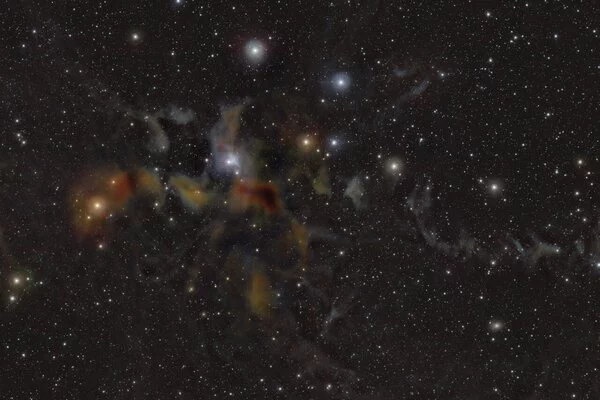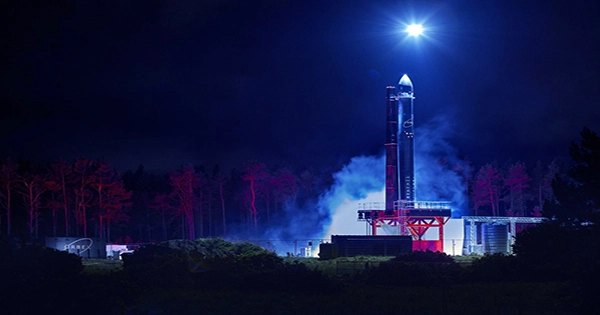Massive stellar nurseries, also known as stellar or galactic nebulae, are enthralling regions of space where new stars are formed. These nebulae offer a plethora of hidden views that shed light on the intricate processes involved in star formation.
Astronomers have pieced together over one million images to create a massive infrared atlas of five nearby stellar nurseries. These massive mosaics depict young stars in the making, embedded in dense dust clouds. Astronomers now have a unique tool to decipher the complex puzzle of stellar birth thanks to these observations.
Using ESO’s Visible and Infrared Survey Telescope for Astronomy (VISTA), astronomers created a massive infrared atlas of five nearby stellar nurseries by piecing together over one million images. These massive mosaics depict young stars in the making, embedded in thick clouds of dust. Astronomers now have a unique tool to solve the complex puzzle of stellar birth thanks to these observations.
“In these images, we can detect even the faintest sources of light, like stars far less massive than the Sun, revealing objects that no one has ever seen before,” says Stefan Meingast, an astronomer at the University of Vienna in Austria and lead author of the new study published today in Astronomy & Astrophysics. “This will allow us to understand the processes that transform gas and dust into stars.”
In these images, we can detect even the faintest sources of light, like stars far less massive than the Sun, revealing objects that no one has ever seen before. This will allow us to understand the processes that transform gas and dust into stars.
Stefan Meingast
Stars form when clouds of gas and dust collapse under their own gravity, but the details of how this happens are not fully understood. How many stars are born out of a cloud? How massive are they? How many stars will also have planets?
Meingast’s team used the VISTA telescope at ESO’s Paranal Observatory in Chile to survey five nearby star-forming regions in order to answer these questions. The team captured light from deep within the dust clouds using VISTA’s infrared camera VIRCAM. “Dust obscures our view of these young stars, rendering them virtually invisible to our eyes.” “We can only look deep into these clouds and study the stars in the making at infrared wavelengths,” explains Alena Rottensteiner, a Ph.D. student at the University of Vienna and co-author of the study.
The survey, called VISIONS, observed star-forming regions in the constellations of Orion, Ophiuchus, Chamaeleon, Corona Australis, and Lupus. These regions are less than 1500 light-years away and so large that they span a huge area in the sky. The diameter of VIRCAM’s field of view is as wide as three full Moons, which makes it uniquely suited to map these immensely big regions.

The team obtained more than one million images over a period of five years. The individual images were then pieced together into the large mosaics released here, revealing vast cosmic landscapes. These detailed panoramas feature dark patches of dust, glowing clouds, newly-born stars and the distant background stars of the Milky Way.
The VISIONS data will also allow astronomers to study how young stars move because the same areas were observed repeatedly. “With VISIONS, we monitor these baby stars over several years, allowing us to measure their motion and learn how they leave their parent clouds,” says Joo Alves, Principal Investigator of VISIONS and an astronomer at the University of Vienna. This is no easy task because the apparent shift of these stars as seen from Earth is as small as the width of a human hair when viewed from 10 kilometers away. These stellar motion measurements supplement those obtained by the European Space Agency’s Gaia mission at visible wavelengths, where young stars are obscured by thick dust veils.
Astronomers will be kept busy for years to come by the VISIONS atlas. “There is tremendous long-term value for the astronomical community here,” says Monika Petr-Gotzens, an astronomer at ESO in Garching, Germany, and co-author of this study. Furthermore, VISIONS will lay the groundwork for future observations with other telescopes, such as ESO’s Extremely Large Telescope (ELT), which is currently being built in Chile and is scheduled to begin operations later this decade.
“The ELT will allow us to zoom into specific regions with unprecedented detail, giving us a never-seen-before close-up view of individual stars that are currently forming there,” Meingast concludes.
















